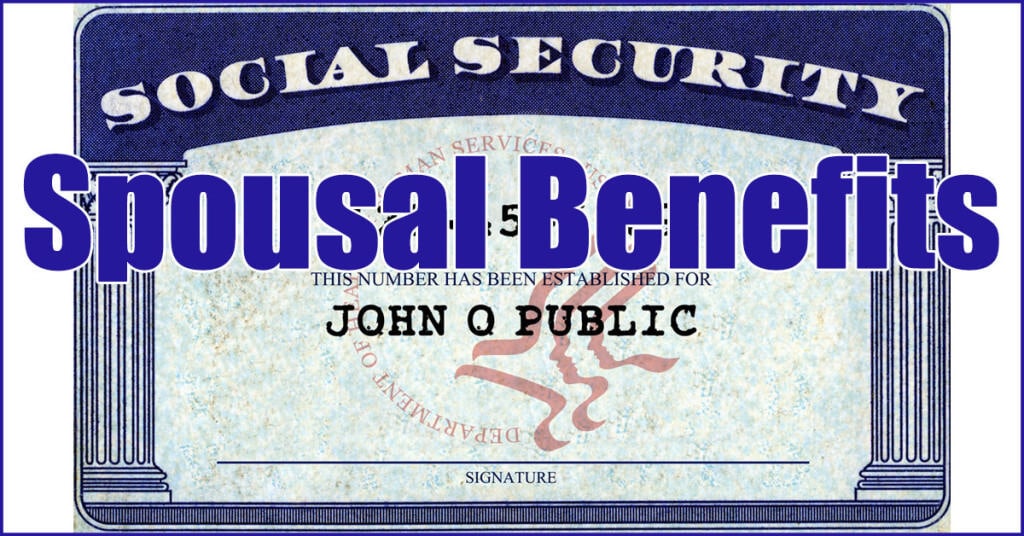As a Long Island Family Law Attorney, we work with all areas of family law, not just divorce and child custody and child support issues. One area that is of particular concern to spouses is the Social Security Spousal Benefit.
The Social Security spousal benefit was created in 1939, at a time when it was common for only one spouse to work outside of the home. It allowed a nonworking spouse to benefit from her contribution to society and families to be protected from poverty upon the retirement or death of the earning spouse. Although today’s norm has both spouses working outside the home, social security spousal benefits provide many married couples with financial security in the retirement years or upon the death of a spouse.
The availability of increased social security benefits for spouses is an often overlooked benefit of exchanging marital vows. While it can sometimes be confusing to determine when and how to take social security benefits in order to maximize social security income, it is crucial that spouses take the time to explore the availability and flexibility of this benefit. Spouses have options in terms of when and how to take advantage of the benefits offered by social security, and a trusted professional should be consulted to help you determine the best course of action for a married couple’s particular needs.
While reading this article, keep in mind that the “spousal benefit” is an entirely different election than the “individual benefit.” Each spouse, dependent upon his or her lifetime earnings, will be eligible to take an individual benefit. In contrast, the spousal benefit is the greater of:
- The social security benefit based upon his or her own earnings, or
- A benefit based upon up to half of the spouse’s individual benefit.
The amount of the spousal benefit is based on two factors:
- The benefit amount that a spouse would receive at his or her full retirement age and
- The age at which a spouse starts receiving the benefit.
The spousal benefit is a percentage of the amount he or she would receive at his or her full retirement age. At the full retirement age, this percentage is 50 percent of a spouse’s individual benefit.
Whether a married couple consists of one or two working spouses, or a primary earner and one that has earned significantly less over the course of his or her lifetime, a combination of factors may indicate when and how it is best to apply for the spousal benefit. Spouses who have not earned enough to qualify for social security benefits on their own may still be eligible to receive a spousal benefit. In such an instance, the non-earning spouse may wish to take the spousal benefits earlier rather than wait until full retirement age.
Similarly, spouses who are independently eligible but have a lower income than their partner can get a combined benefit that equals the benefit of the higher spouse. Keep in mind that your income is not reduced because your spouse also receives social security! Whether one or both spouses take the benefit, both individuals can capitalize on their benefits. A spouse can collect whichever benefit is greater, whether that be the spousal benefit or the individual benefit based upon the spouse’s own earnings.
The earlier that social security benefits are taken, the lower the percentage of benefits. This is because a married couple earns a limited total amount based upon lifetime earnings and, if the benefit is taken earlier, the total amount must be spread out over a longer period of time.
The earliest that a spouse may take the spousal benefit is at the minimum retirement age of 62, at which time the spousal benefit is 30 of the total benefit of the higher-earning spouse at full retirement age (66). At 66, the spousal benefit is the greatest percentage: 50% of the social security benefits that the higher-earning spouse will receive at full retirement age.
Waiting until full retirement age to apply for spouse’s benefit will result in receiving the maximum monthly amount. Provided a spouse has attained the age of 62, he or she may start his or her own benefits at any time. However, he or she cannot take a spousal benefit until the spouse has started taking his own individual benefit. A strategy known as “file and suspend” may allow a spouse to file for his benefits, and then suspend them, so that his spouse can begin to collect a spousal benefit while he can still take the benefit of waiting until full retirement age to take his own benefits.
Finally, the spousal benefit is available to spouses, divorcees, and widows and widowers. A scarcely known “loophole” exists where multiple ex-spouses can collect the same, full spousal benefit from the higher earning spouse. Again, a trusted professional can help you and your spouse learn the “who, when, and how” of taking social security benefits and spousal benefits in order to best suit your individual needs.
For further information, contact a trusted professional or visit www.ssa.gov.
Receive a Free Consultation from an Experienced Divorce Attorney Practicing in Nassau County, Suffolk County, Long Island
To learn more about what you need to know about Family Law Courts on Long Island and how to get help to protect yourself and your future, visit this page: https://divorce-longisland.com/what-cases-family-law/ For more information about how to protect yourself and your children during your divorce in Nassau County of Suffolk County, contact a Long Island divorce attorney with great experience in all divorce and family law matters. Long Island’s Robert E. Hornberger, Esq., PC and his compassionate and experienced divorce lawyers can help. Call us at 631-923-1910 for a complimentary, confidential consultation or fill out the short form on this page and we’ll get right back to you.
